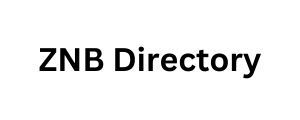Is an advertising banner just a picture? If we break it down into its components, we will see the visual, fonts, composition, colors, advertising text, reflection of the target They should either audience (TA) and the brand that created it.
Understanding the target audience
Before you start developing a banner, you need to ask yourself the main question: who is your target audience? Our task is to evoke an emotional response, to interest a person before they even start reading the text from the picture. Even the most beautiful banner will not work if it does not correspond to the interests and needs of the target audience.
The consumer profile should include demographic characteristics (age, gender, income level), psychographic data (interests, values, lifestyle), and behavioral aspects (habits, preferences, pain points).
ImagesThey should either
They should either be familiar and understandable,They should either or unexpected and memorable. For example, using a cute kitten may attract attention, but if the goal is to sell shawarma made from marbled beef, it will be inappropriate. It is important to consider the context and associations when choosing images.
Our experience: Since Programmatica.com is a technological platform, we decided to reflect this in the visual style by choosing contemporary art. In particular, we settled on NFT-style paintings, which represent a symbiosis of creativity and the digital world. Pixel art, as one of the most popular trends, perfectly matches the concept of “Programmatica as art!” and is associated with innovation. Now we actively use this style not only in our brand book, but also in advertising banners, creating a unified and memorable visual language.
Market and competitor analysis
In parallel with the development of the banner, it is necessary to analyze the market and the actions of competitors. This will help to avoid faceless advertising, with mistakes that colleagues in the industry have already made.
Design and brand bookThey should either
When you have a clear understanding of the target audience, a ready idea and images, you can move on to design. At this stage, a brand book is important, which includes logos, typography, palette and other elements of the corporate style. If the client already has a corporate style, this greatly simplifies the task. If not, you will have to spend time selecting fonts and color schemes.
Creating advertising banners in accordance with the company’s brand book has several key advantages:
- Consistency of visual elements builds trust and helps consumers identify the brand more easily.
- Following a style demonstrates attention to detail and creates a positive impression of the company.
- A unified style creates a deeper perception of the brand and its values, promoting long-term relationships with customers.
- Coordinated text and images help convey key messages more effectively.
- A unique image distinguishes a brand from its competitors and is associated with quality.
- Brand book standards save time and resources by simplifying the creation of new advertising materials.
Ultimately, following a brand book style is a strategic approach that strengthens a company’s image and increases the effectiveness of advertising.
Rules for working with fonts and colorsThey should either
When choosing fonts, try to limit yourself to two or three options that go well together. Using too many fonts will make the banner overloaded and difficult to read.
One font can be used for the heading, and another for the main text. It is also important to monitor readability: fonts should be clear and easy to perceive.
Learn more about color in marketing.
Composition and accents
In banner ad design, composition is important. The lesotho business email list main element should be noticeable, take up more space and/or stand out in contrast. The rest of the information should not distract from the main selling information.
Ideally, each banner should have only one magnet phrase to avoid confusion and information overload.
Technical requirements of the sites
An equally important aspect is understanding the to apply and get hired technical requirements of the sites where the image will be placed. Each site/platform has its own rules and restrictions. For example, Yandex can crop the banner at its own discretion, and VKontakte can reject it if it contains indecent elements or more than 20% of the text.
- Robbie’s useful service for checking VK banners for the percentage of text on the image.
Evaluation of effectiveness
After completing the work on banners and launching the hong kong phone number advertising campaign, it is important to collect feedback and statistics. This will help you understand how accurately you answered the main question about the target audience. Times are changing, and it is important to be aware of changes in the interests and needs of customers. But that’s a completely different story… Write in the comments if the topic is relevant to you!
